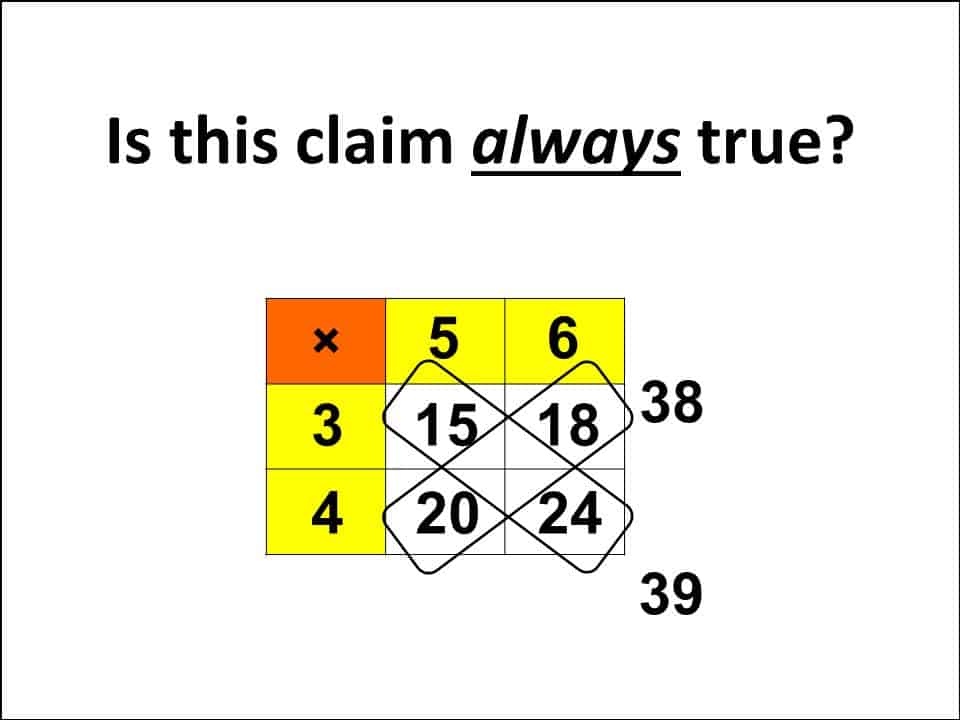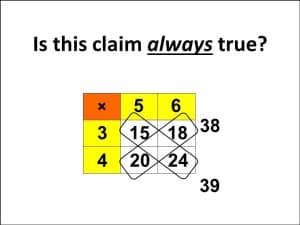I have a claim. It may be true. It may not be true.
My question: Is my claim always true?
Watch the video and think about it carefully. Along the way, remember the power of the pause button, one of the most powerful buttons in education because it provides us with space to process, think, explore, and reflect. Click pause, think deeply, and decide if my claim is always true.
Along the way, feel free to send pictures of your work, your thinking, your productive struggle, and any claims you might discover along the way. If you would like to download the Interactive Multiplication Table to help you explore, you’ll find it here.
You may also enjoy The Parking Meter Question, 8 Animated Dots and 1 Powerful Question, or Math Imposter Sets.
If you simply want to scroll through the blog, begin here.



Leave a Reply